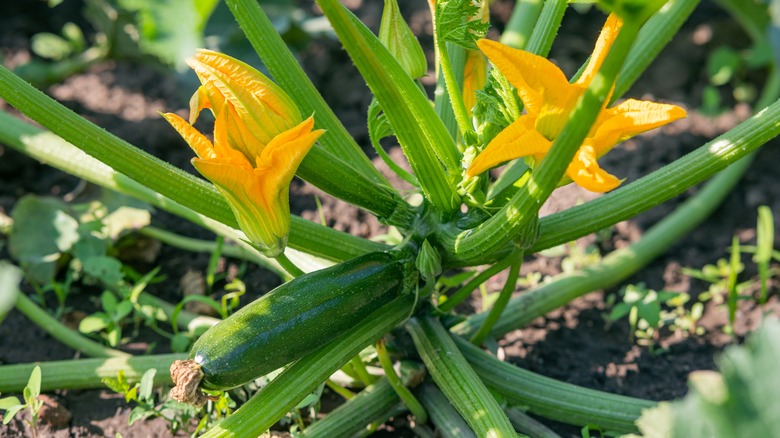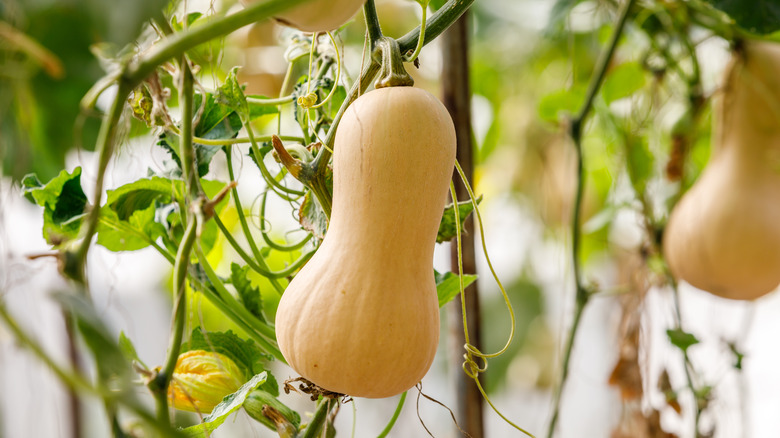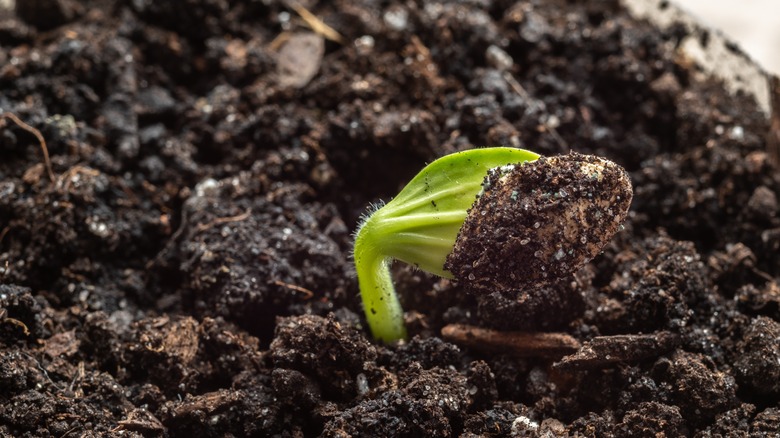The Key Differences Between Growing Winter And Summer Squash
There are two primary types of squash: summer and winter. With a designation like "winter," you would think these varieties would be grown during the colder months, but the name is a little misleading. These cultivars in the cucurbit family are grown throughout the summer and have historically been used as a storage crop. While you can enjoy eating summer squash as soon as it's large enough to harvest, winter squash is harvested after its skin has grown firm, making it suitable for long-term storage.
While summer varieties like zucchini and yellow crookneck squash are popular because they produce a prolific number of fruits each season, winter varieties have a deeper cultural significance. Certain Native American tribes grew these along with corn and pole beans as part of what is known as the "Three Sisters." These crops were harvested at the end of the season as dry corn for baking, and beans and squash for storage, which provided food throughout the winter. Winter squash includes many of your favorites, like acorn, spaghetti, and butternut varieties.
The difference between summer and winter squash
Both winter and summer squash thrive in the same growing conditions. They like fertile soil with consistent moisture in full sun. However, a significant difference when growing these lies in the time it takes to reach maturity. Since summer squash is harvested while the flesh is still soft, you can expect your harvest about 50 days after planting. Summer squash plants mature quickly, but they have a relatively short lifespan. If you live in a warm climate, you may be able to grow two or three generations of these varieties to get a consistent harvest all season. Additionally, they grow as a bush and usually don't require a trellis.
Winter squash varieties grow on vines, similar to watermelon or pumpkins. You can grow them on the ground, but they take up quite a bit of space. Therefore, they are often grown on trellises, which also reduces pest damage and rot. As a bonus, winter squash looks very pretty growing on a large trellis. Although you can start these seeds at the same time as summer squash, you will wait much longer for your first harvest (usually around 100 days), depending on the variety.
How to grow squash
Select a location for your squash that gets at least 8 hours of full sun daily. After the last chance of frost has passed and the soil temperature has reached at least 60 degrees, plant your seeds according to the distance and depth listed on the package. Then, water thoroughly. If the conditions are right, you should see tiny seedlings emerge in less than 10 days. Keep the soil consistently moist by watering thoroughly any time the ground is dry 1 inch below the surface. Winter squash varieties will start producing tendrils when the vines are about 12 inches long, so provide a sturdy trellis for it to climb.
Harvest summer squash when they are about 8 inches long, but keep a close eye on them. These varieties grow very quickly and are masterful at hiding beneath the plant's large leaves. If you skip too many days between harvests, you may end up with a 2-foot-long squash before you see it! Harvest and store winter squash when the skin of the fruit is too tough to pierce with a fingernail. When stored in a cool, dry place, these fruits can last many months.


